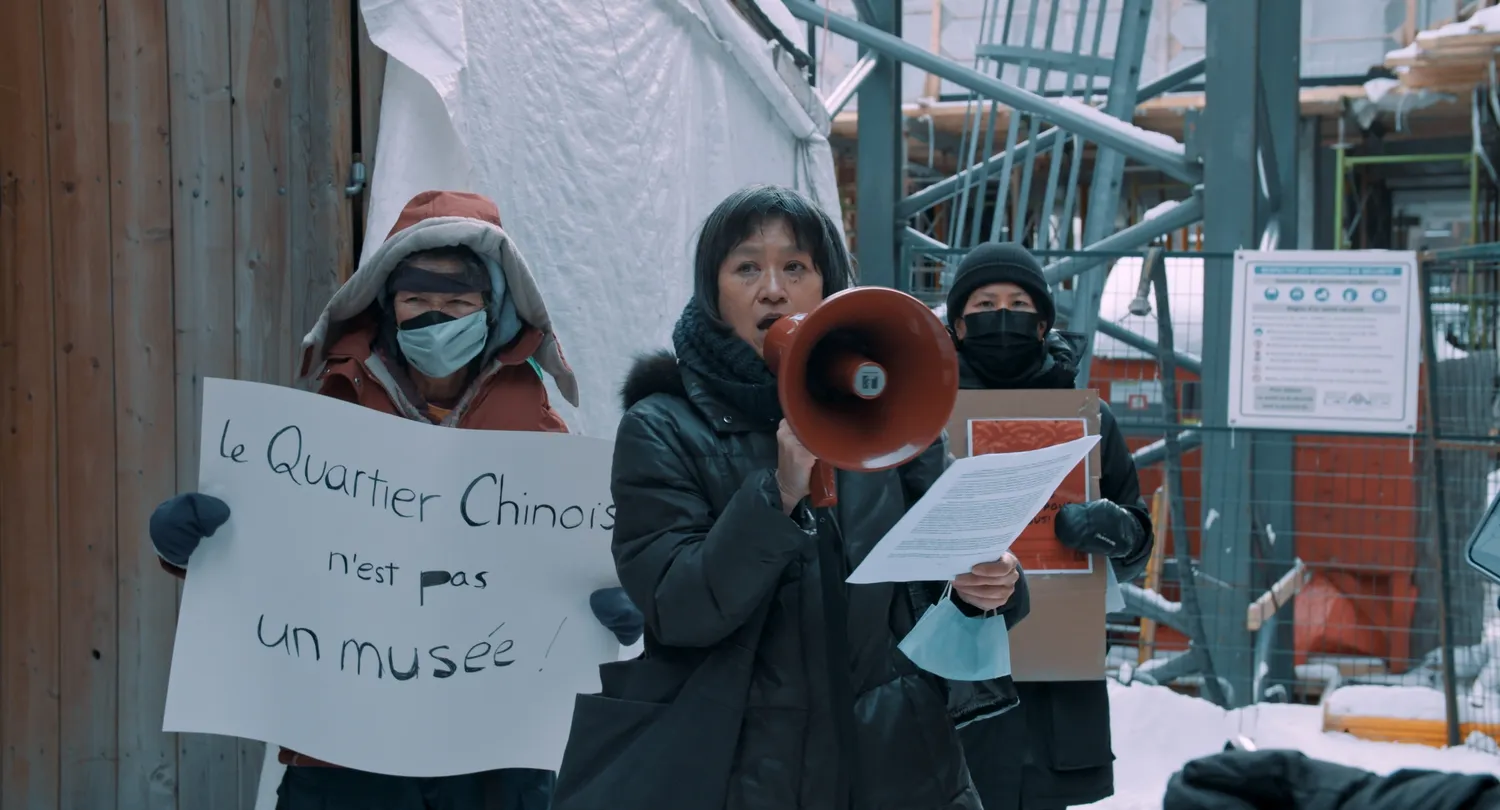From the world’s largest vertical jail being built in New York, developers buying up the most historic block of Montreal’s Chinatown, to pressures of gentrification and displacement in Toronto and Vancouver, Big Fight in Little Chinatown captures paralleling crises against the backdrop of the COVID-19 pandemic and rise in anti-Asian racism.
Co-organized by Chinatown Together and Yarrow Intergenerational Society for Justice 世代同行會, a screening of the film was hosted in the AMS Nest performance theatre on March 27.
The film’s title, a play off of the John Carpenter film Big Trouble in Little China, is an apt description for the essence of the struggle depicted here — the keyword being fight.
“I wasn't going to make a film about a community just passively watching their neighborhood disappear. That wasn't the Chinatown that I knew,” said director Karen Cho in an interview with The Ubyssey.
And the film delivers on its premise, rejecting the description of Chinatown as “dying” — a term often used in media to encapsulate (and oversimplify) the challenges faced by the neighbourhood and its inhabitants, such as concerns around crime, pressures of gentrification and rising rent costs.
The opening sequence is the busy commotion of a shop getting ready to open in New York’s Chinatown. Moments later, Jan Lee, a third-generation property owner in Chinatown, stands his ground on a street corner as a passerby interrupts the interview. He takes a sip from his coffee and shakes his head, “Gotta be fucking nuts.”
Big Fight in Little Chinatown features a vibrant cast of characters from these Chinatown communities: shop owners, clan association members, community activists and more. The camera follows the interviewees behind the scenes, through alleys, up and down the steep stairs of Chinatown buildings into the backrooms of restaurants, shops, clan association buildings, senior residences — fixtures of community within the neighborhoods. There’s an intimacy to the cinematography; as the camera looks outwards from a shop closed during the height of COVID restrictions, a hopeful shopper peers inside.
Other beautiful shots include city skylines and facades of architecture with their weighty sense of historical presence, but the documentary makes clear that the people are what keeps Chinatown alive and vibrant. Despite everything at stake, the film also takes the time to celebrate the relationships between its subjects, including a humorous moment when the old ladies in Chau Luen Society Seniors Residence flirt with Michael Tan of the Chinatown Legacy Stewardship Group.
At no point does Cho bother with detached claims of neutral objectivity either. In her words, the film is “a staunch defender of Chinatown, and what [she] would call Chinatown values.”
For Cho, a fifth-generation Chinese Canadian with ties to both Montreal and Vancouver’s Chinatowns, the topic of Big Fight in Little Chinatown is a return to her filmmaking roots. Her first documentary film, In the Shadow of Gold Mountain, explored Canada’s Chinese Exclusion Act and Head Tax through interviewing those who had been impacted by the discriminatory policies.
“Fast forwarding, like almost 20 years later, seeing the kind of state that these Chinatown's were in, this era of active displacement and erasure … and the impending pressures of gentrification, I was very concerned,” Cho said. “I also felt a real kind of responsibility to come back to these communities that had given me my voice as a filmmaker.”
For Cho, the film has morphed into an advocacy tool, providing the community with a language and means of discussion to articulate the issues they faced. Through the examinations of ongoing erasure faced by the different Chinatowns — as well as interspersed archival footage surrounding historical organizing, like Vancouver Chinatown’s stopping of the freeway — Big Fight in Little Chinatown underscores how racism has and still exists within urban planning, and how Chinatowns defend themselves generation after generation.
Cho and the film's producers have developed a do-it-yourself screening kit, complete with an education guide, to empower organizers to hold their own screenings and use it to discuss issues local to their communities.
Following the film screening was a panel discussion around organizing within Vancouver’s Chinatown. The panelists included Beverly Ho, Operations Manager at Yarrow Society, UBC alumni Minnie Ng, Equity and Inclusion Officer at the AMS, Melody Ma, co-organizer at Chinatown Together and Victoria So, a current UBC INSTRCC student research assistant and Chinatown Together co-organizer.
“Younger people are making those connections between Chinatown and larger social justice issues, be it of housing, affordability, food, sustainability, environmental issues, inclusion, all these kinds of things,” said Cho. “There's always this kind of renewal of a new generation coming into Chinatown with new ideas. And it's also up to the older generations to give room and access for those young people.”
With new issues arising since the film’s initial release in 2023, like the city of Vancouver’s approval of the controversial 105 Keefer’s development and the calling of police to remove Chinatown seniors from the Chinatown Plaza, Big Fight in Little Chinatown is still as relevant as ever in its portrayal of both the challenges Chinatowns face, as well as sparking discussions on how the community can organize in resistance.
Isa You is a volunteer photographer for Chinatown Together, but was not involved in the planning of this event.
Share this article
First online





